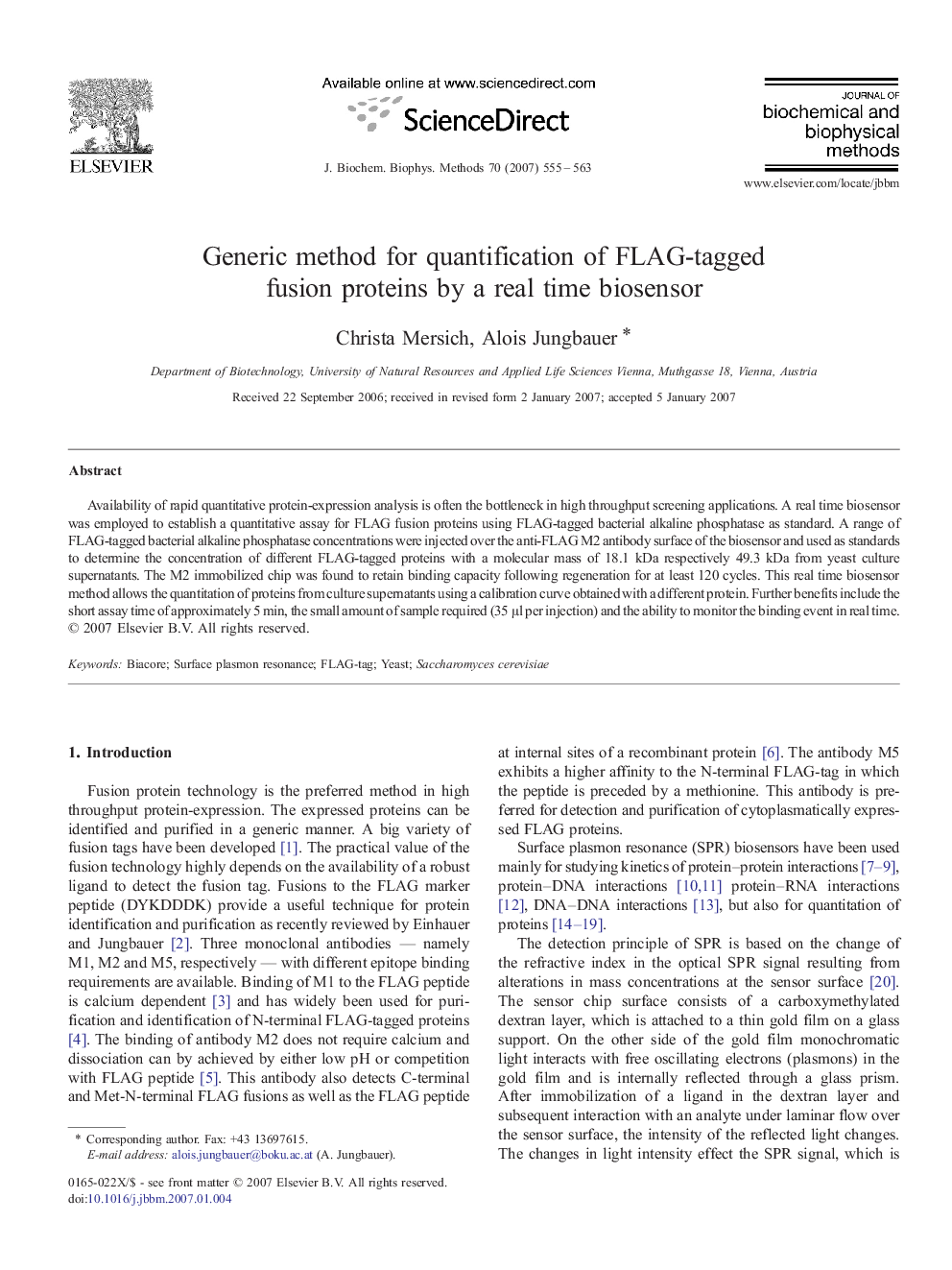| Article ID | Journal | Published Year | Pages | File Type |
|---|---|---|---|---|
| 1988531 | Journal of Biochemical and Biophysical Methods | 2007 | 9 Pages |
Availability of rapid quantitative protein-expression analysis is often the bottleneck in high throughput screening applications. A real time biosensor was employed to establish a quantitative assay for FLAG fusion proteins using FLAG-tagged bacterial alkaline phosphatase as standard. A range of FLAG-tagged bacterial alkaline phosphatase concentrations were injected over the anti-FLAG M2 antibody surface of the biosensor and used as standards to determine the concentration of different FLAG-tagged proteins with a molecular mass of 18.1 kDa respectively 49.3 kDa from yeast culture supernatants. The M2 immobilized chip was found to retain binding capacity following regeneration for at least 120 cycles. This real time biosensor method allows the quantitation of proteins from culture supernatants using a calibration curve obtained with a different protein. Further benefits include the short assay time of approximately 5 min, the small amount of sample required (35 μl per injection) and the ability to monitor the binding event in real time.
